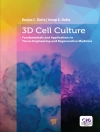Since its launching in 1955, rational-emotive therapy (RET) has become one of the most influential forms of counseling and psychotherapy used by literally thousands of mental health practitioners throughout the world. From its beginnings, RET has dealt with problems of human disturbance. It presents a theory of how people primarily disturb themselves and what they can do, particularly with the help of a therapist or counselor, to reduce their disturbances (Ellis, 1957a, b, 1958a, b, 1962). Almost im- mediately after the creation of RET, it became obvious that the meth- odology could be used in many other fields-especially those involving human relations (Ellis & Harper, 1961a), and in love, sex, and marital relationships (Ellis, 1958a, 1960, 1963a, b; Ellis & Harper, 1961b). The evident popularity and clinical utility of RET in different cultures and its increasing application to contemporary problems of living indicate that rational-emotive therapy continues to be vital and dynamic. The growing appeal of RET may be due in part to its essentially optimistic outlook and humanistic orientation; optimistic because it pro- vides people with the possibility and the means for change. Showing to people how their attitudes and beliefs are responsible for their emo- tional distress and interpersonal problems (and not some out-of-con- scious early childhood experience), awakens in them the hope that, in reality, they have some control over their destiny.
Michael E. Bernard & A. Ellis
Clinical Applications of Rational-Emotive Therapy [PDF ebook]
Clinical Applications of Rational-Emotive Therapy [PDF ebook]
Cumpărați această carte electronică și primiți încă 1 GRATUIT!
Limba Engleză ● Format PDF ● ISBN 9781461324850 ● Editor Michael E. Bernard & A. Ellis ● Editura Springer US ● Publicat 2013 ● Descărcabil 3 ori ● Valută EUR ● ID 4721628 ● Protecție împotriva copiilor Adobe DRM
Necesită un cititor de ebook capabil de DRM












